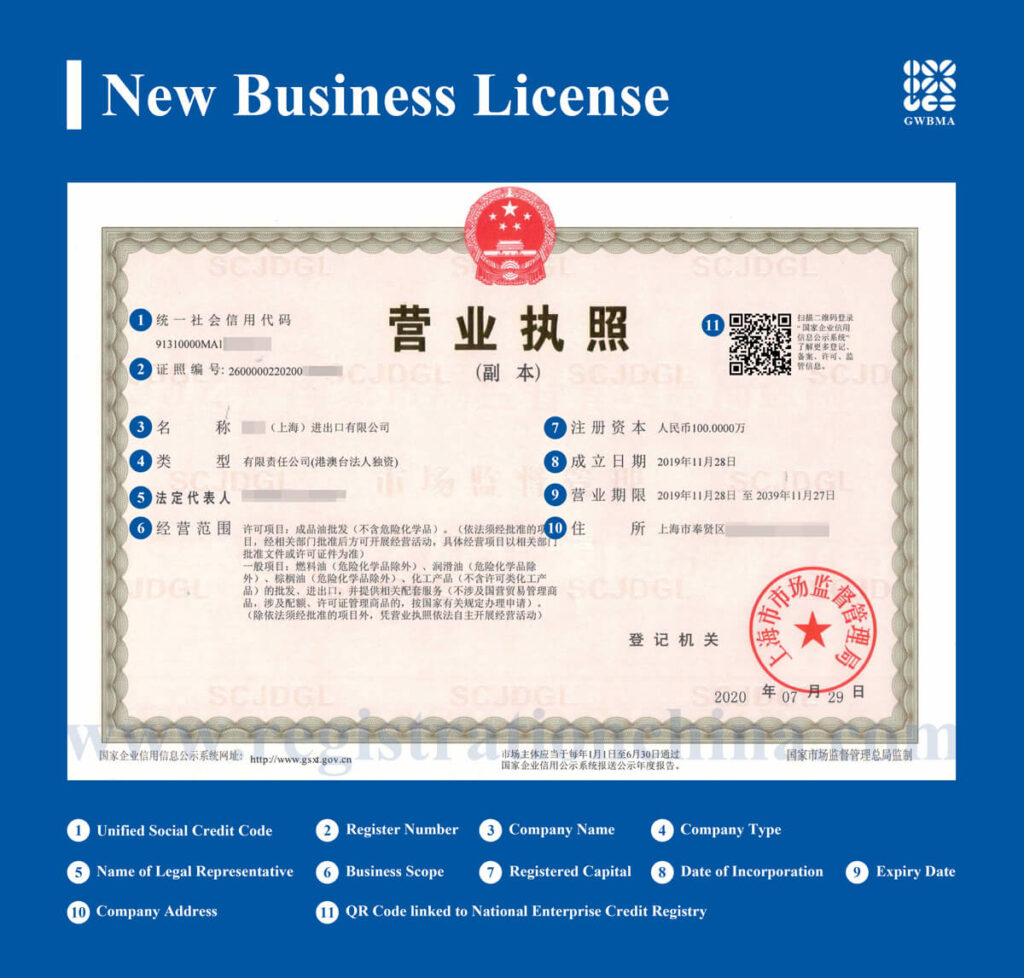Contents
Foreigners engaged in international trade with Chinese companies often ask: why does a company registered as “深圳市太阳神制造有限公司” present itself internationally as “BlueSky Precision Ltd.”? But the Company’s English Translation name is Shenzhen Sun God Manufacturing Co., Ltd. Is this a mistranslation, or a deliberate rebranding? Furthermore, if a Chinese company wishes to change its English name, what procedures must it follow? Can a company decide on its own? This article analyzes Chinese Company Names, as well as the functions and change process of English company names in China, from multiple perspectives including the Company Law of the PRC, company registration, Ministry of Commerce filings, banking systems, and foreign exchange regulations
Legal Basis: Only the Chinese Name Has Legal Effect
According to Article 9 of the Company Law of the People’s Republic of China:
“A company name shall be in Chinese.”
Any company legally registered in Mainland China must use a Chinese name as its only legally recognized identity. This Chinese name appears on the business license and is the standard reference for all legal activities such as English contract execution, trademark registration, invoice issuance, and bank account opening.
The English name is not a legal name under the Chinese legal system. It does not appear on the business license and cannot be replaced by the Chinese name in official legal documents within China.
Many foreign clients often ask why they cannot find the official English name of a Chinese company through Company Search databases in China. The reason is simple: English company names are not officially published or assigned by the Chinese government. Except in foreign trade filings, there is no national registry for English names.
As a result, third-party platforms or intermediaries often provide their own translations of Chinese company names into English. These unofficial and inconsistent translations frequently lead to confusion, misidentification of legal entities, and legal disputes in cross-border transactions.
Why Do English Names Often Differ Greatly from Chinese Company Names?
(Note: All company names used below are fictitious and for illustrative purposes only.)
Tip 1. Transliteration Sounds Awkward, and Direct Translation Is Too Long
Many Chinese company names, if directly translated, can be long and difficult to pronounce. For example:
The Chinese name “山东新希望农业科技有限公司” would become “Shandong New Hope Agricultural Science and Technology Co., Ltd.” in English — accurate, but lengthy and unfriendly for brand communication.
Some companies opt for phonetic transliteration, such as “北京百花” being rendered as “Beijing Baihua”, which is almost unintelligible to foreign readers and ineffective for marketing purposes.
Tip 2. Literal translations are too long and hard to recognize internationally
Chinese company names are often structurally long. For example,
“山东金海新材料科技发展有限公司” would translate to “Shandong Jinhai New Material Technology Development Co., Ltd.” — too long and difficult for foreign clients to remember.
Tip 3. Phonetic transliteration lacks brand meaning
Transliteration such as “Lantian” (for 蓝天) is meaningless to foreign clients and lacks branding power.
Tip 4. English names can be freely chosen
During the foreign trade registration process, a company can freely define its English name, provided it is legal, non-deceptive, and not already used. As a result, many companies choose internationally oriented names such as:
-
“深圳市龙腾电子有限公司” → DragonTech Electronics Ltd.
-
“广州亿达包装有限公司” → E-Pack Global Ltd.
This naming strategy is legal and often more effective for global brand positioning.
Tip 5. More Flexibility for International Branding
Some companies adopt a concise and powerful English name that is not based on their Chinese name at all, such as:
Tencent / Chinese name: 腾讯
ByteDance / Chinese name: 字节跳动
Alibaba / Chiense name: 阿里巴巴
These are not translations; they are original brand names created specifically for the global market.
For this reason, using a direct English translation of a Chinese company name is often the least practical approach. A company’s English name may therefore differ significantly from its registered Chinese name.
English Names Are Often Self-Defined During Foreign Trade Registration
In Mainland China, foreign exchange is under strict control, known as China’s Foreign Exchange Control system. If a company is registered as a consulting, technology, or similar service-oriented business, and its business scope only includes consulting services, it is not required to obtain a Foreign Trade Operator Registration Certificate.
However, if the company intends to engage in import or export activities, it must first update its business license to include “import and export trade” as part of its approved business scope. This is considered substantive import-export activity. The first step for such companies is to register with the local Bureau of Commerce to obtain the Foreign Trade Operator Registration Certificate. Only after that can the company apply for the Import & Export Certification.
Therefore, the English name is not a translation of the Chinese name. It is a separate name chosen by the company during registration — which explains why it often differs significantly from the Chinese original.
In many cases, a Chinese company’s English name is simply a direct translation of its registered Chinese name, which may seem straightforward. However, this approach often lacks consistency and legal accuracy.
Therefore, we strongly recommend requesting the Manual Company Verification Report, which remains the most reliable method for identifying the accurate English name corresponding to a registered Chinese company. This ensures clarity and certainty when verifying Chinese entities in cross-border transactions.
Chinese Tracompany English Names: Filed During Foreign Trade Operator Registration
Although not legally binding, a Chinese company engaged in foreign trade (import/export) must register with the Ministry of Commerce by applying for a Foreign Trade Operator Registration Certificate. During this process, the company may provide an English name.
This English name becomes the official label used in international transactions, including:
-
Customs documents and bills of lading (B/L)
-
Export invoices (Commercial Invoice)
-
Certificates of Origin (CO)
-
Bank documents for international remittance
-
Trade contracts with overseas clients
While the English name carries no legal force under company law, it holds de facto official status in international trade practice.
Can Chinese English Names Be Changed? Yes, But the Process Is Complex
Although companies define their English names freely at the time of registration, once adopted, the name must be used consistently across all trade documents. Changing it requires synchronized updates across multiple systems.
Step 1: Submit a Name Change Application to the Ministry of Commerce
Required documents:
-
Statement comparing old and new English names
-
Copy of the business license
-
Original foreign trade registration certificate
-
Formal name change application
Once approved, a new certificate will be issued with the updated English name.
Step 2: Notify and Update Banking Systems
This is often the most critical and overlooked step. If a company uses the new English name for international transactions, it must ensure the bank’s internal records are updated.
-
Contact the company’s foreign currency account bank (e.g., ICBC, CCB, BOC, CMB)
-
Provide the new registration certificate and explanation letter
-
The bank will update the customer profile
Note:
Some banks — especially those with centralized foreign exchange operations — may require approval from their head office or submission of a Name Consistency Declaration. The updated name may also be uploaded to the SAFE (State Administration of Foreign Exchange) system.
Failure to update may result in:
-
Rejected international remittances
-
Rejected L/C payments
-
Foreign currency account suspension or investigation
Therefore, always confirm with the bank before using the new name in trade.
Step 3: Update Customs, China E-Port, and Related Systems
The company’s English name is also registered with China E-Port, Customs, inspection, and export tax systems. All must be updated to prevent inconsistencies that could lead to delays, audits, or rejection during customs declaration and tax refunds.
| Item | Legally Recognized | Changeable | Requires Filing | Affects Foreign Trade |
|---|---|---|---|---|
| Chinese Company Name | ✅ Yes (Only legal name) | ❌ No (Change requires formal re-registration) | ✅ Yes (Registered with Administration for Market Regulation) | ✅ Yes (Basis for all business) |
| English Company Name | ❌ No (Used for trade only) | ✅ Yes (Via Ministry of Commerce) | ✅ Yes (MoC/bank / SAFE) | ✅ Yes (Customs/banking / contracts) |
Legal Note: Use the Chinese Company Names Specified in the Contract
In cross-border commercial disputes, BeGood Law Firm has often represented foreign clients pursuing legal actions against Chinese companies. One recurring issue is identifying the correct legal entity of the Chinese counterparty, particularly in import-export contracts.
Many foreign parties rely solely on the English name in contracts (e.g., “Sunray Precision Ltd.”), without verifying the company’s registered Chinese name. This may cause the court or arbitral tribunal to reject the case due to an unidentifiable legal entity.
While the English name is widely used in trade, customs, and banking, it is not a legally recognized entity. Under Chinese Company Law, the legal name must be in Chinese and registered with the relevant authority. The English name in the Foreign Trade Operator Certificate provides practical identification but has no legal standing.
In contract practice, foreign companies should ensure that the Chinese name and unified social credit code of the Chinese entity are clearly stated, along with a stamped copy of its business license. Precise identification is essential for any future dispute resolution.
Name consistency is not merely a formality. It underpins enforceable rights, legal obligations, and the integrity of international commercial relationships. Understanding the legal distinction between a Chinese name and its English counterpart is key to reducing cross-border risk.
Conclusion:
A Chinese company’s English name may evolve with the market and adapt to global expectations. But its Chinese name is the foundation recognized by law — the sole identity that carries responsibility and legal consequence.
In linguistic ambiguity, the legal boundary remains precise. The difference between names reflects a deeper divergence between business form and legal substance.
Tips: All company names mentioned in this article are fictitious and used for illustrative purposes only.




